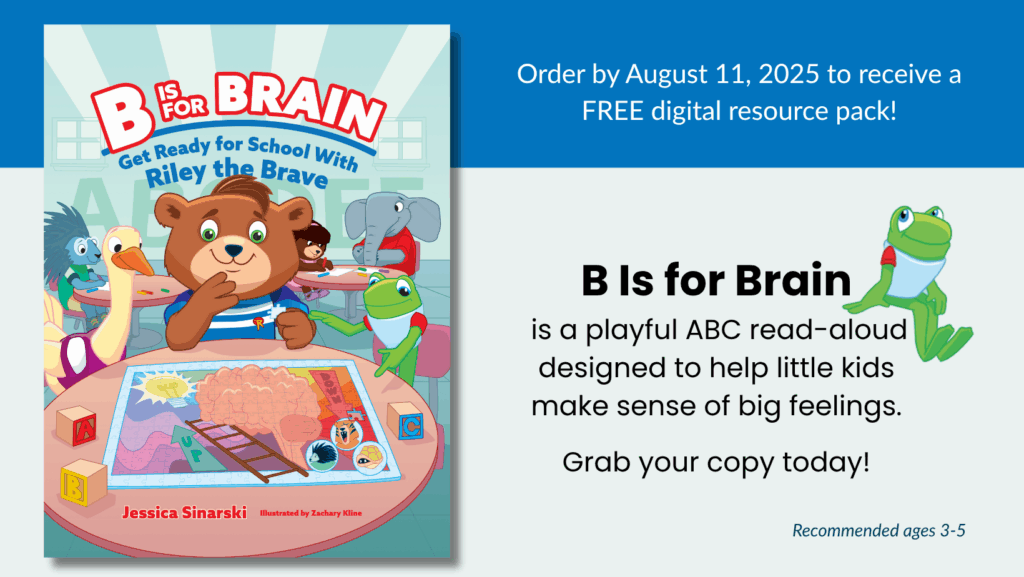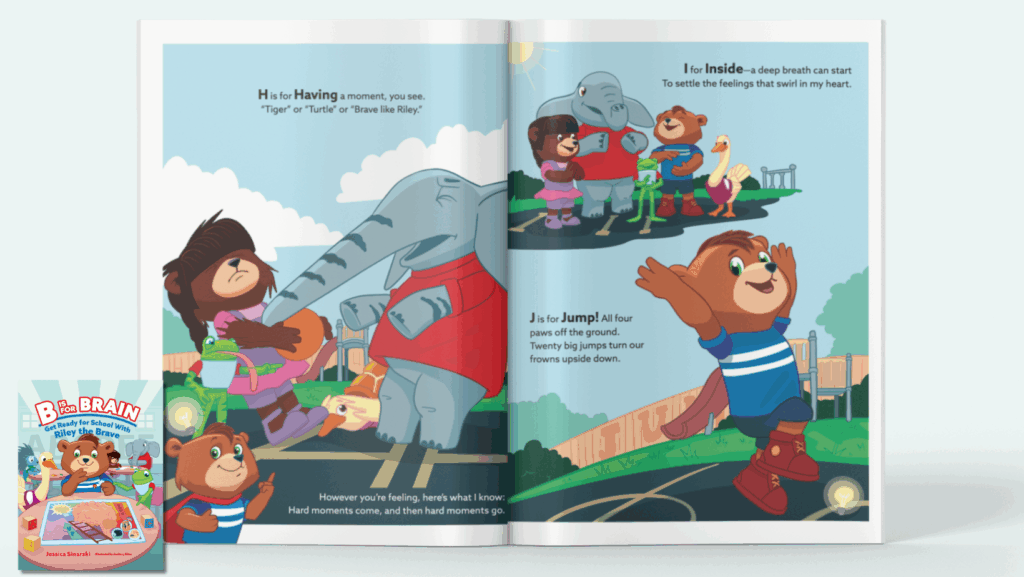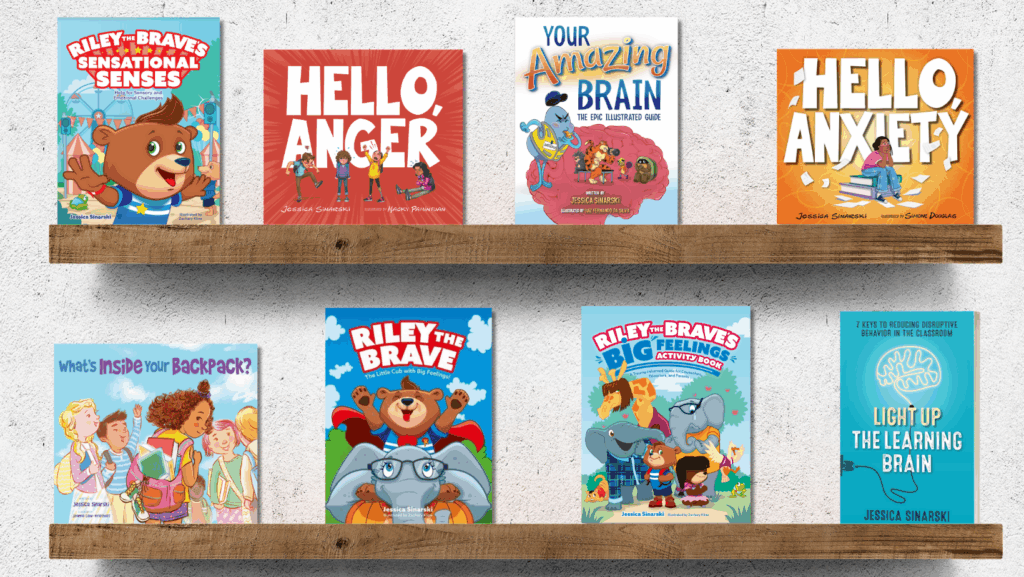Untangling Anger & Shame in Young Children
How many times have you heard, “I was NOT mad” when everything you see says the child in front of you is, in fact, roaring mad?
Spitting mad. Throwing shoes mad. Ripping dad’s shirt on the way into therapy mad.
My guess is many, many times. That’s where this story starts, with a young client of mine who was definitely NOT mad as he arrived kicking and screaming (literally!) to his therapy appointment with me.
We didn’t head straight into the office that day. We stayed outside, stomping through puddles and swinging sticks. A little rhythm. A little movement. Just enough to help his nervous system start to settle.
When it seemed like his Upstairs Brain was peeking back out, I said, “Hey, I’m wondering what was going on that you got so mad earlier—”
He cut me off with a growl: “I was NOT mad.”
Okay. Not ready.
The three of us kept walking and playing with our sticks. Then I shifted gears: “Were you feeling kind of Tiger Brain?”
That, he could say yes to.
This was a kiddo whose brain had been impacted by pre-natal trauma plus extensive abuse and neglect in his first year of life. His Tiger Protector was always on alert. I honestly don’t remember what the trigger was that day, but I remember the relief I saw in his whole body when we started to unpack his intense, primal feelings in words he could relate to.
That’s the beauty of a framework you can feel in your bones.
If you’ve read my recent post about the B.R.A.V.E. Framework, you already know that
- Behavior is a brain thing, and
- No part of the brain is bad (not even our roaring mad Tiger Brain).
A critical step in helping kids do less “tiger behavior” (yelling, hitting, etc) is being able to acknowledge the feeling. It’s the “name it to tame it” idea coined by Dr. Dan Siegel. But that’s only possible when we start with some safety, compassion, and support.
And let’s be honest, ‘mad’ is a tough feeling for a lot of us to name, not just for kids impacted by trauma. It gets tangled up with shame and fear and punishment.
But when we offer playful, strengths-based language—like Tiger Brain—we give kids a safe way in.
This isn’t the first time we’ve talked about anger here on the Healers & Cycle Breakers Blog, so I’ll share a quick resource round up at the end of this post. But first, here’s a peek inside my brand new book, which covers this topic and so much more!
A New Tool to Make Big Feelings Less Scary
So many kids don’t have the words (or the safety) to name big feelings like anger. And so many adults are left wondering: How do I help if they can’t even admit that they are mad!?
That’s one of the reasons I wrote this book.
📘 B Is for Brain: Get Ready for School With Riley the Brave is a playful ABC read-aloud that helps young children build emotional awareness, confidence, and maybe even a little self-control.
The rhyming verse and bright illustrations offer a pathway to talk about the tricky stuff: anger, fear, frustration, even the brain science behind a meltdown.
And it’s not just helpful for therapists! Teachers are excited to use it for morning meetings. Parents are ready to read it to their preschoolers. My 4-year-old nephew wanted to hear all about the porcupine, tiger, and turtle when I showed him the cover. 😍
That’s exactly what I was hoping for—get little kids excited to learn the big skills they need for the classroom and beyond.
Do you want to peek inside too?
This spread is one of my favorites. 💙 If you have read any of Riley the Brave’s Adventures, you know that Riley is no stranger to Downstairs Brain moments! Luckily, he has some practice climbing back to his Upstairs Brain. Here we see him sharing some of those brain-boosting strategies with his friends!
Even the “mad-but-not-mad” moments feel less overwhelming when we have a shared language. That (and so much more!!) is what this book gives.
More Tips and Tools for Roaring Mad Moments
As promised, here’s a little resource round up!
Articles:
Unpacking Anger | Blog post with tips for all ages—be sure to scroll down for a helpful breakdown of book recommendations
Parents: Here’s How To Manage Your Anger According to an Expert on Trauma & Anger | Little Things online magazine
Video:
How to Handle Tiger Moments | Quick video with tips for taming the tiger
Podcast Episodes:
Maintaining Connection with an Angry Kid | Creating a Family: Talk about Adoption, Foster, and Kinship Care
Trauma-Informed Anger Management for Kids | This Hour Has 50 Minutes
How School Counselors Can Help Kids Feel and Deal with Anger | School Counseling Simplified
How to Own and Embrace Your Anger | Shameless Mom Academy
Books:
There are lots of reasons our kids might have Tiger moments.
Sensory reasons.
Anxiety reasons.
Trauma reasons.
And so much more.
Making it easier to talk about tough topics is a big part of why I write. Check out my full library of resources at www.BraveBrains.com/SHOP.
Glad we’re in this together!


